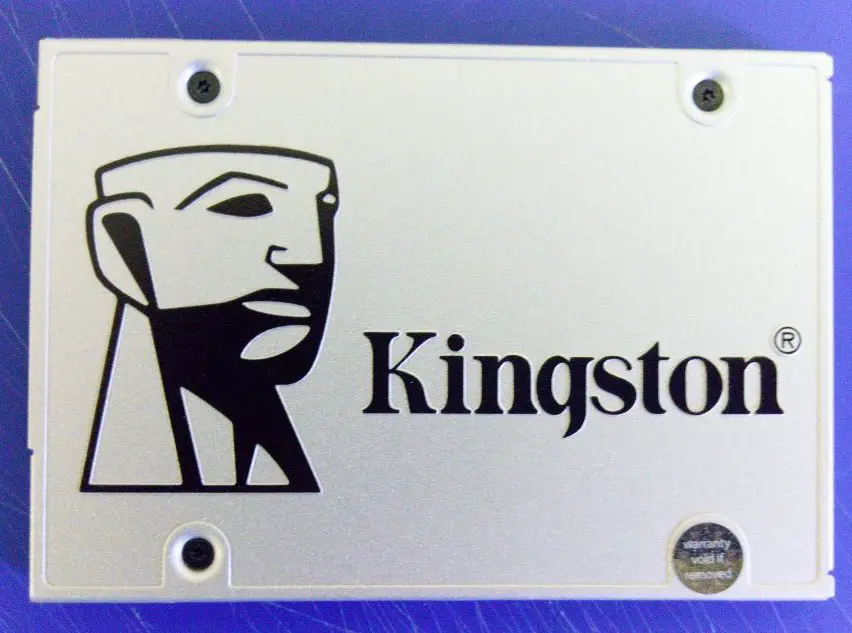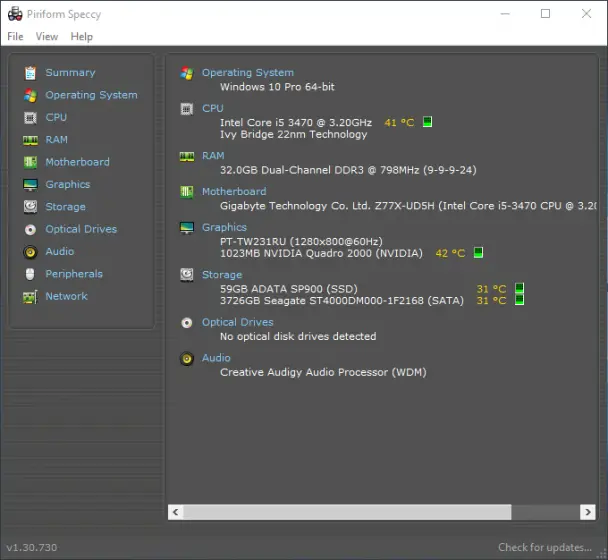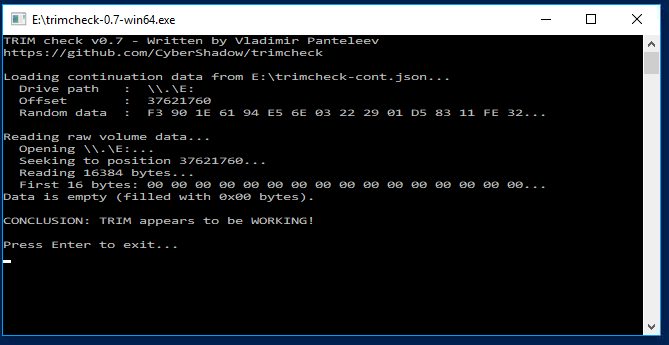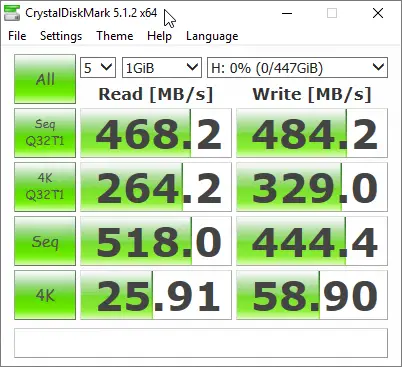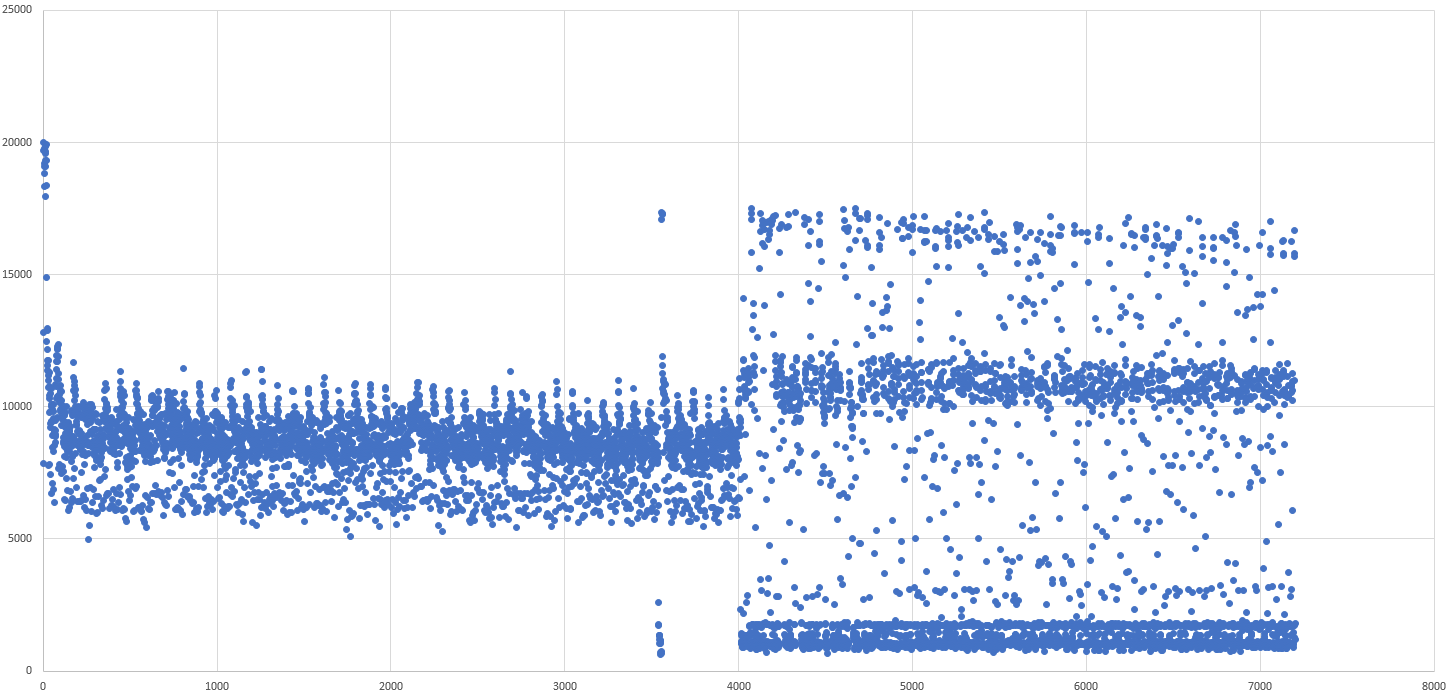Kingston UV400 480Gb SSD Review
Eager to get into budget systems kingston released the UV400 SSD. This drive is a follow up to the UV300 which never made it into the US and was originally targeted at emerging markets. The UV400 being designed for emerging markets is also a natural fit in budget systems.
Our Test system and Procedure
Our test system isn’t going to set any records for cpu capability. But it’s sufficiently equipped for SATA based ssd testing. The platform is a gigabyte Z77 motherboard equipped with an i5-3470. Intel SATA6 ports are used in testing both as they offer consistently impressive performance regardless of generation as well as being the most commonly available port for most users. The system is running windows 10 Professional and was under no load(AV disabled) for all tests. Testing will consist our standard set of tests which we outlined previously. The Test system was recently upgraded with both a Syba hot swap bay for faster testing as well as a bump to 32Gb of ram courtesy of Ballistix.
The UV400
Packaging for the UV400 is simple but contains all the information you’d expect. Capacity is listed in bold as well as is a rather vague performance claim of 10x faster than a spinning disk. Physically the drive has a nice metallic shell although it’s unfortunately assembled with security torx smaller than any I have. The metal casing should help ensure consistent temperatures however and the simple design is inoffensive overall if visible.
| Capacity | 120Gb | 240Gb | 480Gb | 960Gb |
|---|---|---|---|---|
| Controller | Marvell 88SS1074 | Marvell 88SS1074 | Marvell 88SS1074 | Marvell 88SS1074 |
| Firmware | x | x | 0C3J96R9 | x |
| Nand | Unspecified TLC | Unspecified TLC | Unspecified TLC | Unspecified TLC |
| Sequential Read | 550 MB/s | 550 MB/s | 550 MB/s | 540 MB/s |
| Sequential Write | 350 MB/s | 490 MB/s | 500 MB/s | 500 MB/s |
| 4k Random Read | 90,000 | 90,000 | 90,000 | 90,000 |
| 4k Random Write | 15,000 | 25,000 | 35,000 | 50,000 |
| Temperature Range | 0-70°C | 0-70°C | 0-70°C | 0-70°C |
| Dimensions | 7.0mm X 69.9mm X 100.0mm | 7.0mm X 69.9mm X 100.0mm | 7.0mm X 69.9mm X 100.0mm | 7.0mm X 69.9mm X 100.0mm |
| Endurance | 50TBW | 100TBW | 200TBW | 400TBW |
| Warranty | 3 years | 3 years | 3 years | 3 years |
Looking at the above table we see some solid statistics for a budget drive. Endurance for the 480Gb model is a very solid 200TBW backed by a 3 year warranty. We also see that Kingston is specifying different performance levels based on capacity. The smaller 120 and 240Gb models in particular suffer compared to their larger siblings due to a lack of parallelism. This is our first instance looking at a drive using the Marvell® 88SS1074. This controller is a variant of the one we saw with the Ultra II with improvements to help with newer TLC memory. We unfortunately will not be able to take a look inside the UV400 like we would normally due to their use of security torx smaller than any I have currently available to me.
Kingston SSD manager
Like Adata and Sandisk, Kingson has a software suite specifically designed for their drives. Considering the lack of information third party tools such as Crystal Disk Info(our standard for such things) seem to have on the UV400 this is a welcome addition.
ATTO 3.05
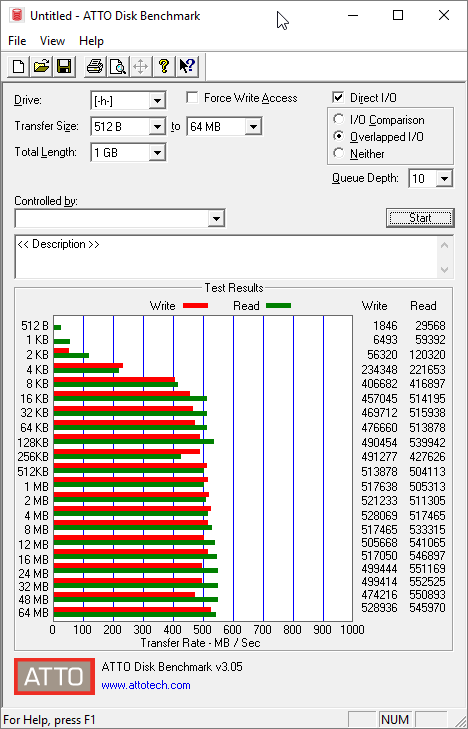 As always we start with ATTO a favorite of the SSD manufacturers. ATTO is actually the test Kingston quotes in their spec sheet although the specifics aren’t listed. Write speeds quickly approach the listed spec passing it at several sizes passing it first at the 512Kb data size and dancing around it past there. Read speeds struggle to reach the rated speed however requiring a 24Mb test size something we won’t see in any of our other tests.
As always we start with ATTO a favorite of the SSD manufacturers. ATTO is actually the test Kingston quotes in their spec sheet although the specifics aren’t listed. Write speeds quickly approach the listed spec passing it at several sizes passing it first at the 512Kb data size and dancing around it past there. Read speeds struggle to reach the rated speed however requiring a 24Mb test size something we won’t see in any of our other tests.
Taking a look at it next to the other drives shows off some interesting patterns. The UV400 has a similar profile overall to the Ultra II in the resd tests with the same weakness in the 128 and 256 kb block sizes. With the newer marvell controller the UV400 shows a much smoother write curve than the Ultra II. We continue to see TLC ssd’s show what looks like impressive write speeds although it’s important to remember that they all utilize an SLC cache.
Trimcheck
Trim is a requirement for maintaining the performance of any modern SSD and informs a drive which blocks are no longer in use by the file system allowing them to be flushed during garbage collection, as SSD’s have program and erase as separate operations, this helps maintain performance by avoiding degradation as blocks are used. Fortunately most modern operating systems include support for this command as do most ssd’s at this point. As expected the UV400 comes back with full support of the command ensuring consistent performance as it ages. Something that’s very encouraging considering it’s endurance.
Crystal Disk Mark 5.1.2 x64
Weak performance with the 128k and 256k block sizes leads to suboptimal results in crystal disk mark. We can also see that this is not a high performance controller with a suprising decrease in performance for reads at queue depth 32.
Stacked up against the other drives paints an interesting picture for the UV400. We see it falling short in the read speed tests especially in high queue depth something I’d be curious to examine in another drive with the same controller. Write performance thanks to available caching options however looks fantastic next to the other drives even beating out the SU800 with it’s newer 3d nand.
Anvil
 Our first real look at full spectrum performance as always comes from Anvil. It is as thorough as ever and at a glance highlights a weakness in 4k random writes at QD1. The rest of the results seem to fall in line with what we expect from our initial testing.
Our first real look at full spectrum performance as always comes from Anvil. It is as thorough as ever and at a glance highlights a weakness in 4k random writes at QD1. The rest of the results seem to fall in line with what we expect from our initial testing.
Bringing the comparisons together in charts We can see that the UV400 is on good footing as far as response times are concerned. Response times line up well with the SU800 and reactor and a bit below the Ultra II. Outside of the 4k Write test which is dominated by the reactor everything else falls in place similar to other drives although we do see excellent scaling up to QD16. Sequential performance comes in well ahead of the Ultra II and just behind the other drives in the test.
AS SSD
AS SSD utilizes incompressible data exclusively in its testing and also reports access times. This is something missing from most of our other tests and these come back at and impressive.041 and .046ms . The reported performance once again shows a bias towards read speed over write. AS SSD also includes a convenient file copy benchmark showing us what we can expect when moving a variety of data types around on the drive itself, these results are quite good showing a competent controller capable of handling mixed read/write scenarios.
Bringing in comparisons highlights some of the strengths of a SLC cache as it has a massive impact in the simulated tests over our MLC drive. Although it can’t quite keep up with the newer 3D TLC in the SU800 this is still an excellent showing over the Ultra II.
PCmark8
PCmark continues to show small variances between SSD’s. We’re seeing detailed scores at are generally sub 1s slower than the other drives which will rarely be tangible in normal usage.
SLC caching again
Using IOmeter we wrote Sequential data as fast as possible for 5 minutes to test the size of the SLC cache present in the UV400. Kingston is not nearly as generous with their cache size as adata was with the SU800. At 16 Seconds write performance starts to falter and drops to the native TLC write speed. 5.9Gb of data was written during this time period putting the cache at rather small size relative to the drive. Native performance of the TLC however hovers between 75MB/s and 125MB/s this is not a drive I would use for exporting any video renders as performance would suffer very quickly.
Consistency Test
Coming off a rather small cache the performance in our extended consistency test is unsurprising to say the least. Our custom consistency test bombards the drive with 4k random writes at a queue depth of 32 until it reaches what is referred to as “steady state” at this point we observe how the controller and nand act under their worst case scenario(dirty nand and no time to recover). This test is run for two hours which is more than enough to make a drive like the UV400 beg for mercy. This is a rather interesting chart as it seems that around the 4000 second mark the drive actually recovers some emptying and refilling it’s TLC cache although this comes at the cost of a much lower performance floor. Lets see how it held up against the other drives.
Having that second wind in the later half of the test makes the UV400 look rather impressive compared to other TLC drives. It still can’t compete with a MLC SSD when it comes to average or minimum performance.
One area that recovery didn’t help the UV400 was in performance consistency however. This is still led by the 960Gb Ultra II with the UV400 actually managing the worst consistency score we’ve seen on a SATA based SSD to date. Not a good title to hold(and even the USB attached Ventura Ultra didn’t score far away).
Pricing
Bringing price into the equation puts the UV400 in an interesting place. At the 120gb and 240Gb price points it’s not poorly priced and with sales likely to be an excellent option. At the 480Gb capacity which we’re testing today it’s too expensive compared to the more capable SU800 and Ultra II to make sense. And as always the Mushkin Reactor throws a wrench in the works for everyone at the 1Tb capacity offering all the benefits of MLC memory at a lower price than the competing TLC drives.
Closing thoughts
Offering the 120Gb capacity is going to be a strength for the UV400. Although it doesn’t perform like some of the more capable drives ANY SSD is going to feel more responsive than a HDD. Offering a 120Gb capacity for 52.99 at the time of publication will help ensure that it’s a tempting option for systems that would have skipped an SSD entirely. At larger capacities such as the 480gb model we reviewed the picture is less pleasant. The Ultra II and SU800 both undersell it while offering better SLC caching mechanisms. The 512gb reactor is within a few dollars and performs better under sustained workloads. That’s not to say that it’s a bad drive. The use of a metallic shell ensures consistent temperatures while keeping up in day to day tasks the average user would subject it to. However it needs a moderate price decrease to be competitive with it’s contemporaries.
Do you think one of our tests needs to be tweaked? Or did we completely miss something that you’re looking for when buying a drive? Let us know in the comments below or on Twitter, or Facebook. And don’t forget that you can support us on Patreon to help us continue to bring you high quality reviews as well as access to. early news and input on reviews to come.

